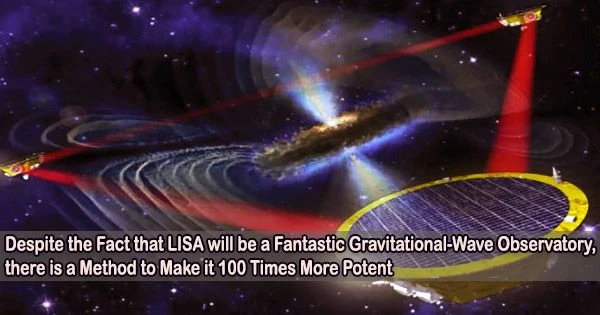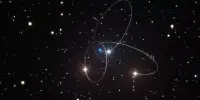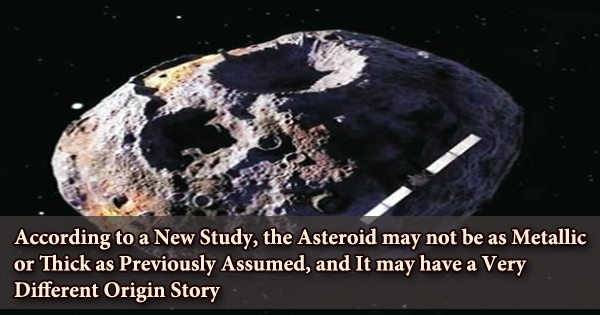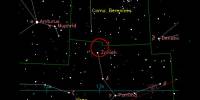A revolution in astronomy was sparked by the first discovery of gravitational waves (GW) in 2015 by scientists at the Laser Interferometer Gravitational-wave Observatory (LIGO). Einstein’s Theory of General Relativity foresaw this occurrence, which consists of ripples in spacetime brought on by the collision of two large objects, a century ago. The advent of next-generation observatories, such as the Laser Interferometer Space Antenna (LISA), will significantly enhance this developing field in the upcoming years.
Astronomers will be able to employ GW events to examine the interiors of unusual objects and the rules of physics with increased sensitivity since they can be used to pinpoint the origin of GW events. As part of their Voyage 2050 planning cycle, the European Space Agency (ESA) is considering mission themes that could be ready by 2050 including GW astronomy.
Researchers from the University of Glasgow and the ESA’s Mission Analysis Section recently proposed LISAmax, a novel idea that would expand on LISA. According to their report, this observatory might be able to double the sensitivity of GW.
The research was led by theoretical physics Dr. Waldemar Martens, a Mission Analyst at the ESA’s European Space Operations Center (ESOC) in Darmstadt, Germany. Aerospace engineer and astrophysicist Michael Khan, also a Missions Analyst at the ESOC, and astrophysicist Dr. Jean-Baptiste Bayle, an astronomy and astrophysics Research Fellow with the University of Glasgow joined him.
The journal Classical and Quantum Gravity is now reviewing the paper that presents their findings for publication; it was recently posted online on the arXiv preprint server.
Since they were first detected by LIGO scientists in 2015, researchers with LIGO and other observatories worldwide have refined the types of GW events they can detect. This includes the Virgo Observatory in Italy (near Pisa) and the Kamioka Gravitational Wave Detector (KAGRA) in Hida, Japan. These observatories have since partnered with LIGO, forming the Ligo-Virgo-KAGRA (LVK) Collaboration.
The number of events identified has multiplied and some have even been traced back to their sources thanks to the work of these and other observatories as well as improvements that have boosted sensitivity.
The basic idea of LISAmax is to detect GWs at even lower frequencies than what LISA can do. To be sensitive to these frequencies, one must increase the laser arms of the detector. Larger arms mean larger wavelengths and, thus, lower frequencies. The three LISAmax spacecraft are placed close to the triangular Lagrange points in the sun-Earth system, which gives the detector an arm length of 259 million km. For comparison, LISA’s arms have a length of 2.5 million km. This makes LISAmax sensitive to GWs in the micro-Hertz band and opens a new window for GW astronomy.
Carole Mundell
As Dr. Martens told Universe Today via email, this pioneering work has been invaluable. But like all forms of astronomy, future progress is dependent in part on having observatories in space:
“Now that there is no doubt that gravitational waves can be measured, astronomers want to use them as an additional source of information where previously only electromagnetic waves were available. Earth-based detectors, like LIGO/Virgo/Kagra are sensitive in the frequency range of tens of Hertz to several kilo-Hertz. This makes them sensitive to sources like black hole mergers of a few tens of solar masses.”
“However, it is known that much larger objects, like super-massive black holes (>10^6 solar masses), exist in the center of galaxies. Mergers of these objects produce gravitational waves far below the sensitive band of Earth-based detectors. To see them, we have to go to space and construct an observatory, like LISA, that has an arm length of 2.5 million km.”
The co-orbiting bodies subsequently merged to form binary black holes (BBHs) or binary neutron stars (kilonova events), which are the two types of binary objects that have so far been responsible for GW events being seen. There are a lot of other conceivable origins, and researching these occurrences can help us learn more about the Universe.
“Among those are primordial gravitational waves that were produced during processes a fraction of a second after the Big Bang,” said Dr. Martens. “We hope that LISA can detect those, but it is not clear yet. That’s one of the reasons why detectors with higher sensitivity and/or different frequency bands are considered for Voyage 2050.”
The Scientific Program, the cornerstone and primary “mandatory program” of the European Space Agency, has included the Voyager 2050 planned cycle as its most recent iteration. Goals, proposals, and money for science must come from all member states, and they are all chosen unanimously.
With the help of these cycles, the European scientific community will be able to see clearly which research areas merit development and investment over the long term, allowing member states to plan their priorities well in advance.
The program has been planned in cycles of about 20 years since the 1980s, which is compatible with the amount of time required to prepare ambitious space missions. The first planning cycle (Horizon 2000) was established in 1984 and consisted of decisions that led to the Solar and Heliospheric Observatory (SOHO), Cluster, Rosetta, XMM-Newton, and Herschel missions from the mid-1990 to the early 21st century.
In 2005, a further planning cycle (Cosmic Vision) was launched, including mission proposals that would be realized between 2015 and 2025.
This prepared the way for missions like the recently launched JUpiter ICy moons Explorer (JUICE) and the Advanced Telescope for High Energy Astrophysics (ATHENA) X-ray observatory and LISA missions scheduled to launch by the 2030s.
The ESA Director of Science Carole Mundell to select scientific properties to follow up on the ATHENA and LISA missions initiated the most recent cycle, Voyage 2050. While these missions will be game-changing, especially in collaboration, Dr. Martens and his colleagues propose ways in which the LISA mission could be enhanced further. As he explained:
“The basic idea of LISAmax is to detect GWs at even lower frequencies than what LISA can do. To be sensitive to these frequencies, one must increase the laser arms of the detector. Larger arms mean larger wavelengths and, thus, lower frequencies. The three LISAmax spacecraft are placed close to the triangular Lagrange points in the sun-Earth system, which gives the detector an arm length of 259 million km. For comparison, LISA’s arms have a length of 2.5 million km. This makes LISAmax sensitive to GWs in the micro-Hertz band and opens a new window for GW astronomy.”
“Generally speaking, whatever source can be measured by LISA below 1 mHz, can be measured with LISAmax at a signal-to-noise ratio that is about two orders of magnitude better. An example that is discussed in the paper is the inspiral phase of supermassive black hole binaries. While LISA will only be able to see such sources shortly before the final merger event, LISAmax can observe these objects thousands of years before, thus allowing for a much better measurement of certain parameters.”
This idea is being investigation by the scientific community and could have significant effects on the development of GW astronomy. Next-generation GW observatories can not only detect a wider variety of GW events, but also more events and their origins.
In addition, astronomers hope that GWs will let them examine planets and satellites, probe the innards of extreme objects, and explore the rules of physics.
The proposal put forth by Dr. Martens and his colleagues is one of several GW concepts submitted to the ESA for the Voyage 2050 program. These concepts include a space-based interferometer that would survey the sky for GWs in the millihertz to microhertz (mHz to µ-Hz) frequency range.
Another suggests using interferometers sensitive to GWs in the mHz region to gain greater insight into the characteristics of black holes. Others explain how the “missing link” for GW astronomy could come from observations in the decihertz (dHz) range, while high-angular astronomy could aid in locating the origin of GWs.
Another key focus of the ESA’s Voyage 2050 mission is research into the physics of the early cosmos, which includes the investigation of primordial gravitational waves. The physics and microphysics of this early cosmic age would finally be able to be studied by researchers by analysing the GWs produced during the inflationary phase.
















